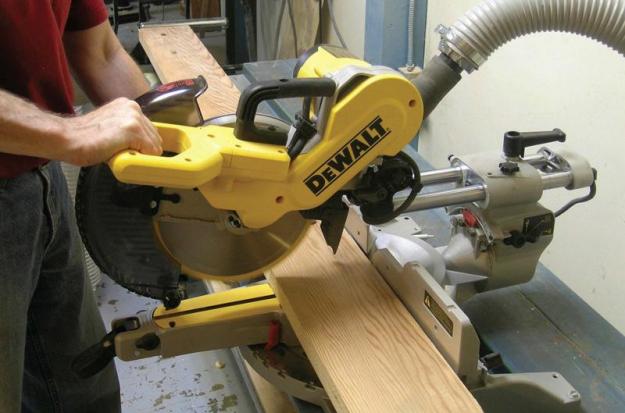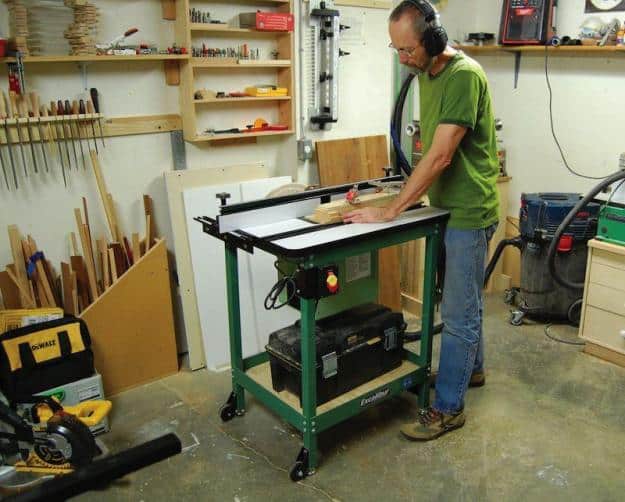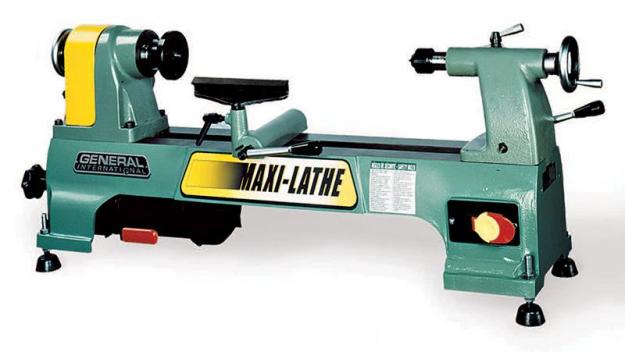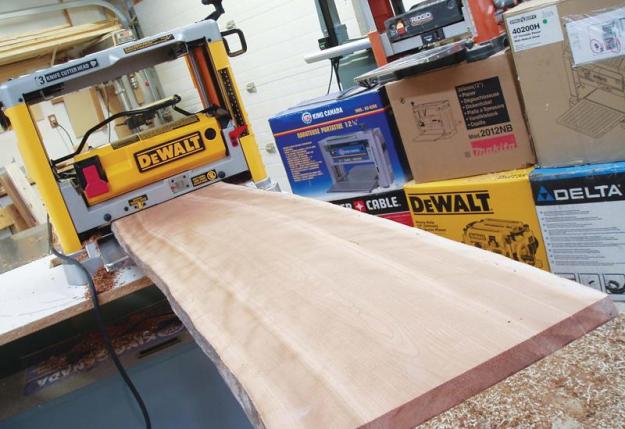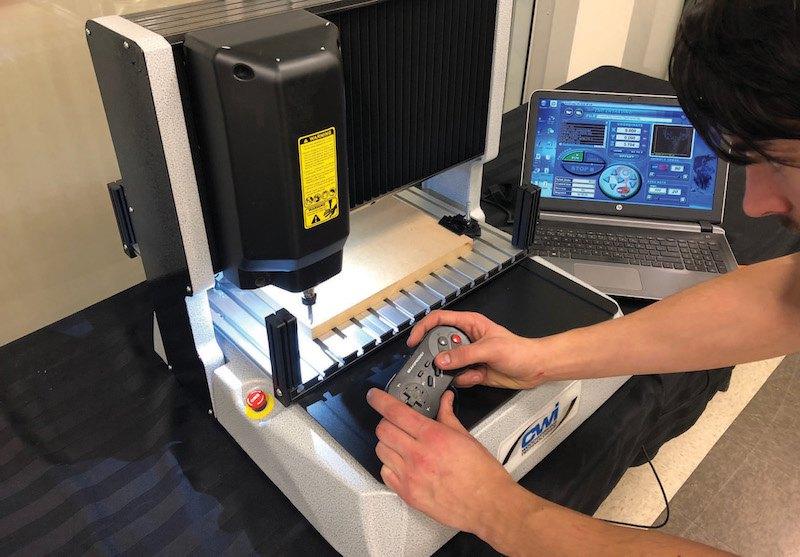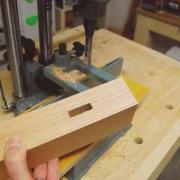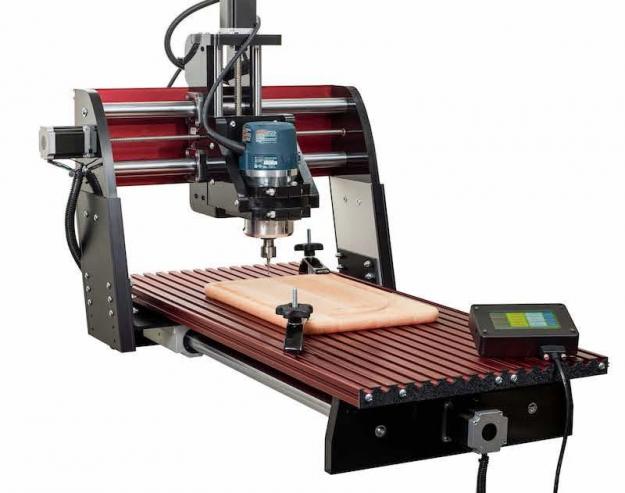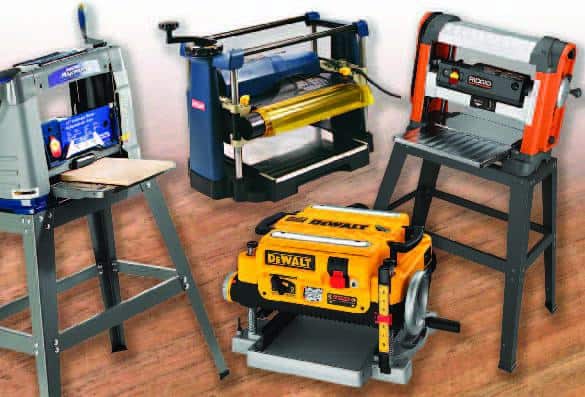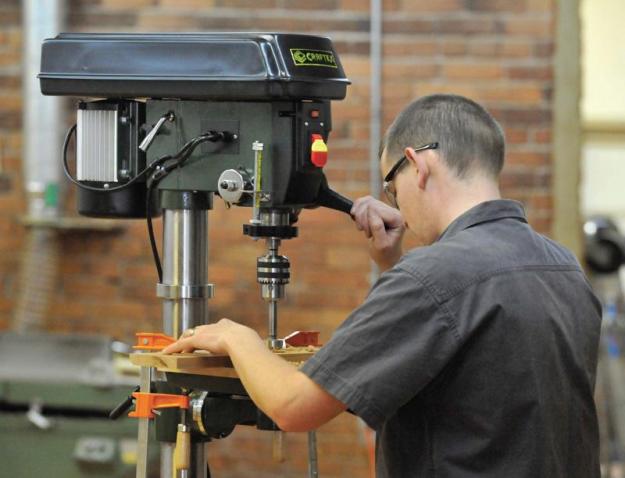SITE MAINTENANCE IN PROGRESS
Workshop wonders: 3 space-saving router table solutions
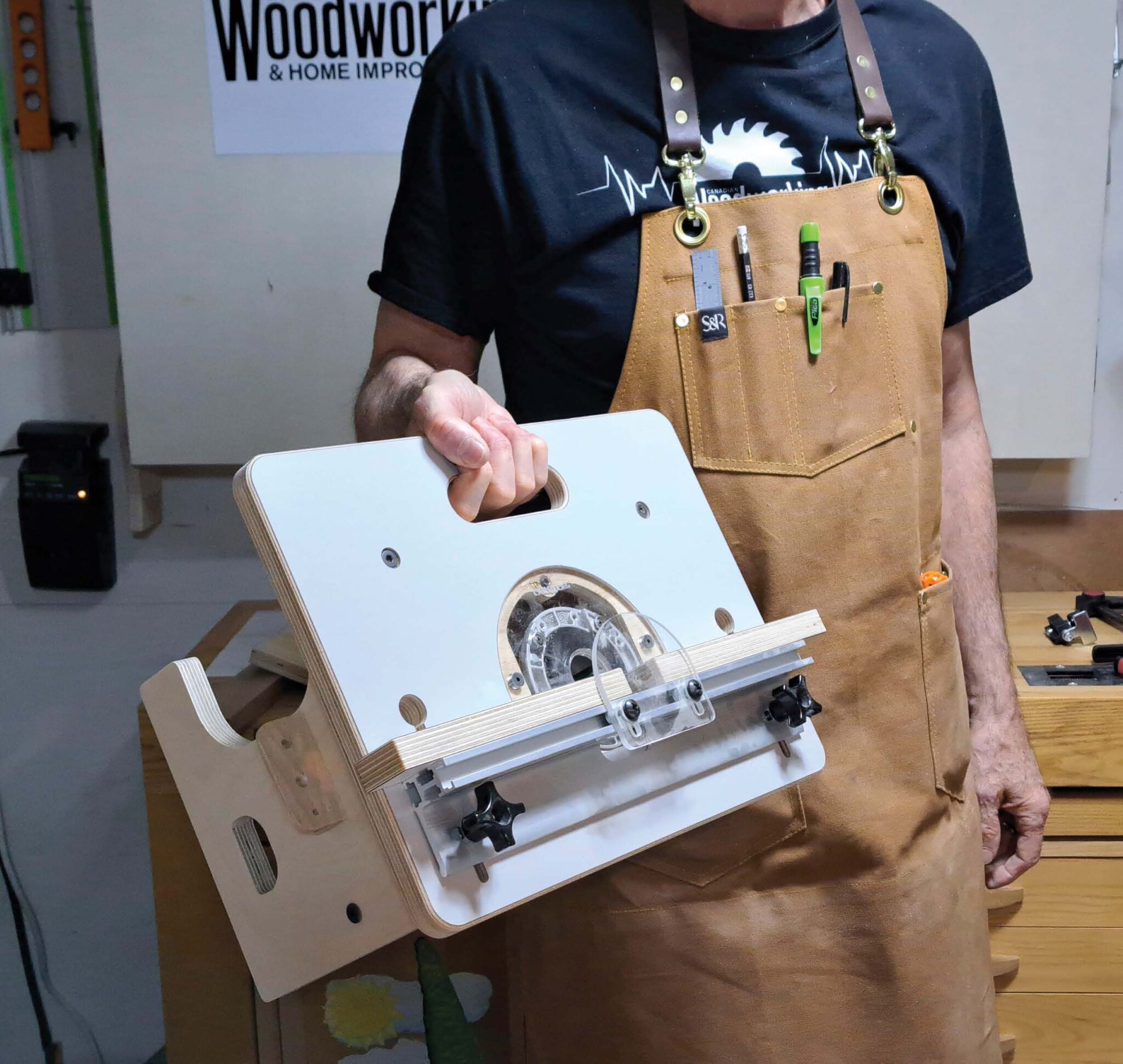
Strapped for space? One of these compact benchtop router tables is sure to please.
While a router table isn’t a must-have for all woodworkers, it can become a game-changer depending on what you’re doing. One of the key advantages of using a router table is that you don’t have to manage the weight and vibration of a handheld router. Instead, both of your hands are free to guide the workpiece. This is especially helpful — and much safer — when working with small or narrow stock which can be difficult and risky to rout by hand. With the help of accessories like push sticks, featherboards or jigs, these tasks become significantly easier, more accurate and safer on a router table.
If you’re working in a small shop, floor space is often at a premium. A large, stationary router table might not be practical, especially if you use it only occasionally. In these cases, a compact benchtop router table can be a smart alternative. It offers much of the functionality of a full-size table but takes up significantly less space. When not in use, it can be easily stored away on a shelf, under a bench or even hung on the wall, keeping your workspace flexible and uncluttered. A benchtop router table typically costs less than a full-size table, making it great for hobbyists or beginners.
A benchtop router table somewhat limits the size of stock you can safely work with. However, for larger panels, you can switch to a handheld router. Benchtop tables are generally designed for use with compact (a.k.a. trim or palm) or mid-sized routers, as their lighter construction may not support the weight or torque of full-size, high-horsepower models. They may also lack advanced features found on stationary models, such as micro-adjustable fences, precision-lift systems and fully integrated dust collection. If you can live with some of these limitations, a benchtop router table can still be a valuable, time-saving addition to your workshop.
We shop-tested three different styles of benchtop router tables, each specifically designed with small shops in mind. Whether you’re tight on space or simply looking for a compact, capable setup, we think you’ll find one of these models a great fit for your workshop.
Veritas Table for Compact Routers
Leevalley.com $180.00 (requires the Veritas Compact Router Base Plate, $18.90)
This is about the smallest router table you can buy. It comes disassembled but only takes a few minutes to put together. There are tabs on the front of the table that enable you to clamp the unit to a workbench, but I found it quicker and easier to attach a base to the table for this purpose.
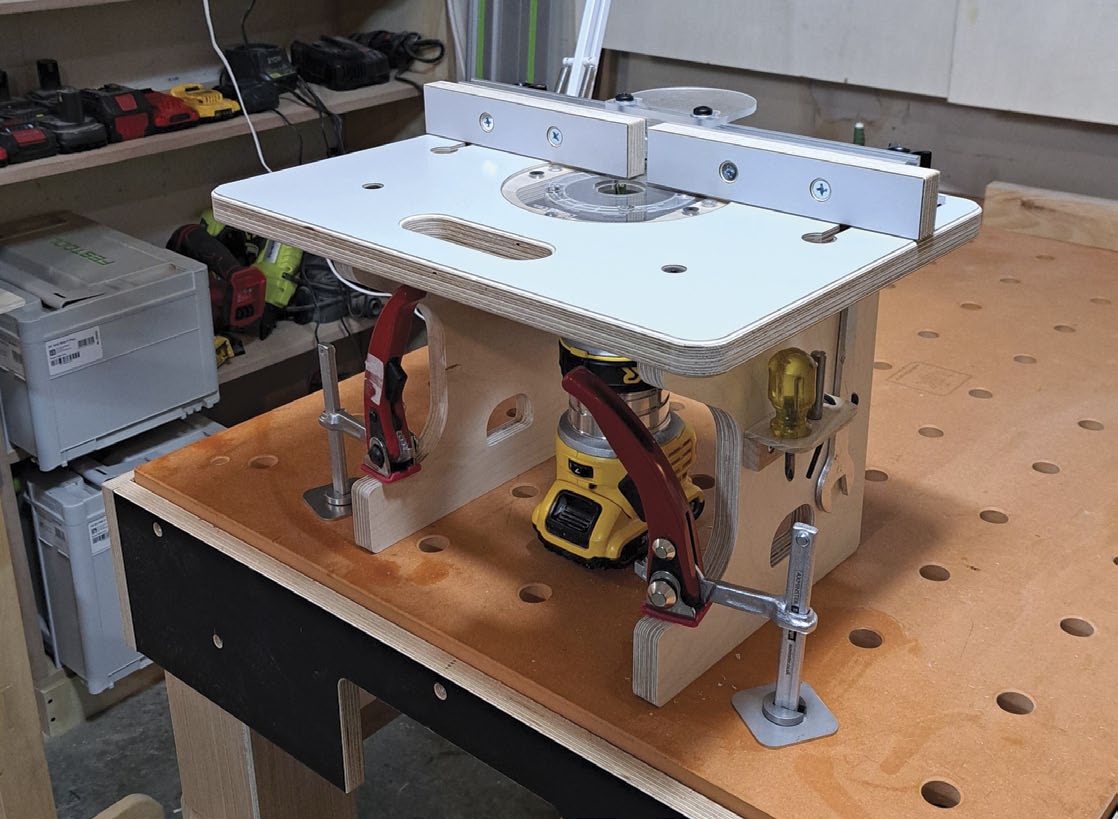
You do need to purchase a separate mounting plate to use with this table, as the hole configuration in the plate must match the hole pattern on your router. Plates are available for five brands of compact routers, or you can buy a blank plate and drill matching holes for your specific model, which is easy to do. The one caveat is that the router base can’t be wider than 4″. Once installed, it’s easy to adjust the plate so it sits flush with the tabletop. The baseplate accepts standard 1-3/16″ template guides, which is a great asset if you do a lot of template routing.
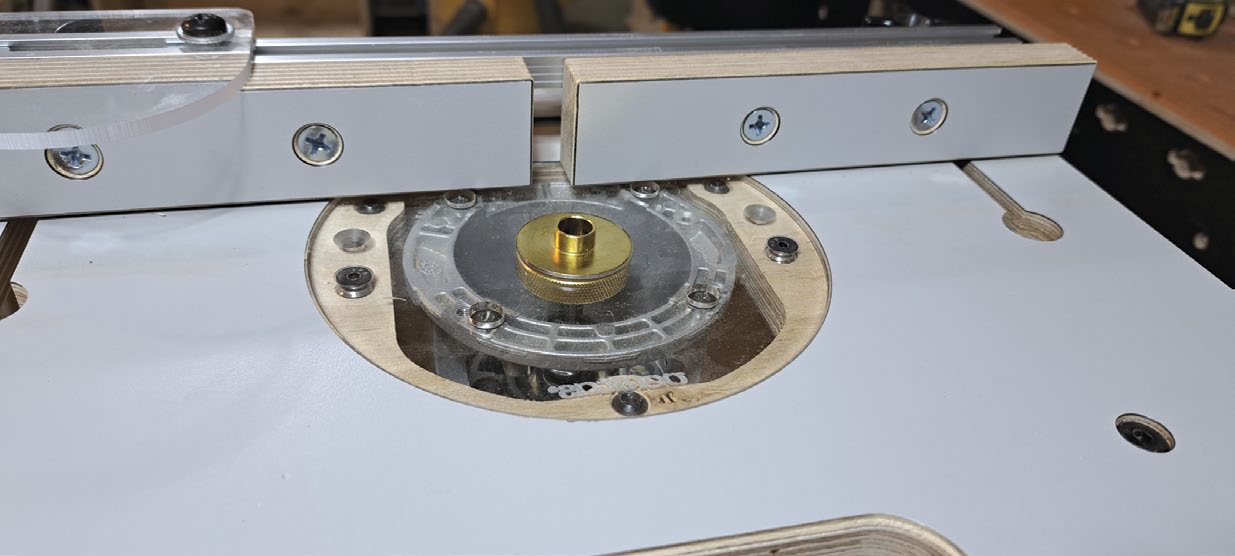
The low-friction, wear-resistant laminate surface measures approximately 11″ by 15″. The two sub-fences are each 7-1/2″ wide and 1-1/2″ high. Occasionally, however, I need a taller fence when routing wider stock. The safest solution is to either replace the existing fences with taller, shop-made ones or, as I did, attach taller sub-fences over the originals using the T-track on top of the fence frame.
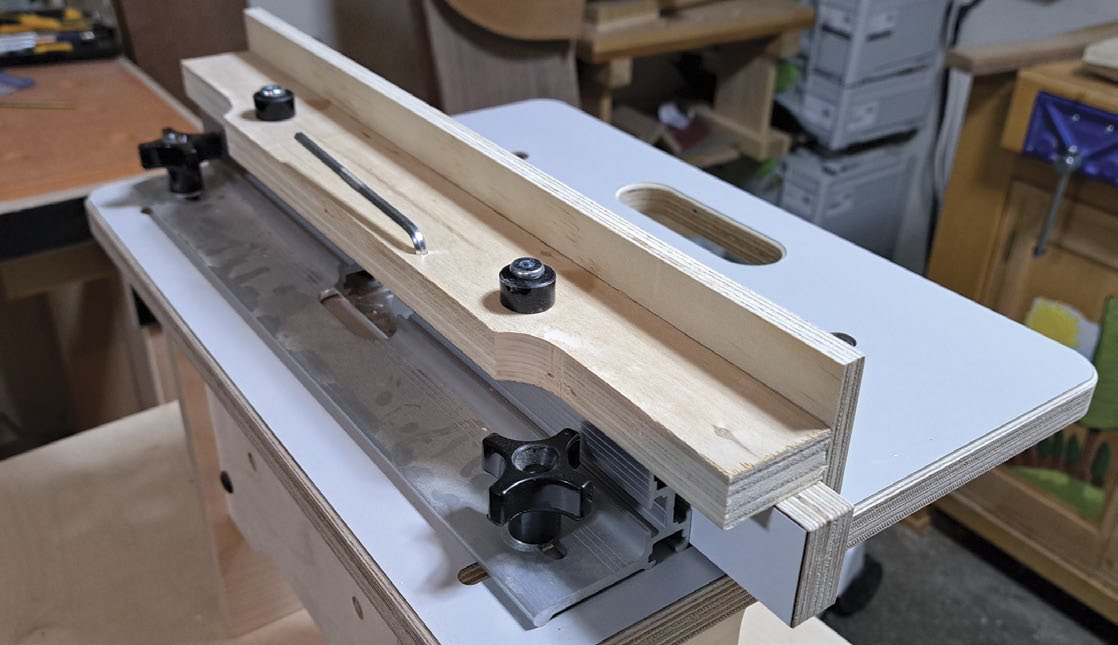
The T-track also allows you to mount an adjustable stop block or featherboard. You get 7″ of workspace from the centre of the router bit to the front of the table, which limits the width of stock you can safely rout. There isn’t a standard dust port on the back of the fence, but you can add a Powertec-style dust port that accommodates any 2-1/2″ OD dust port adapter and hose fitting.
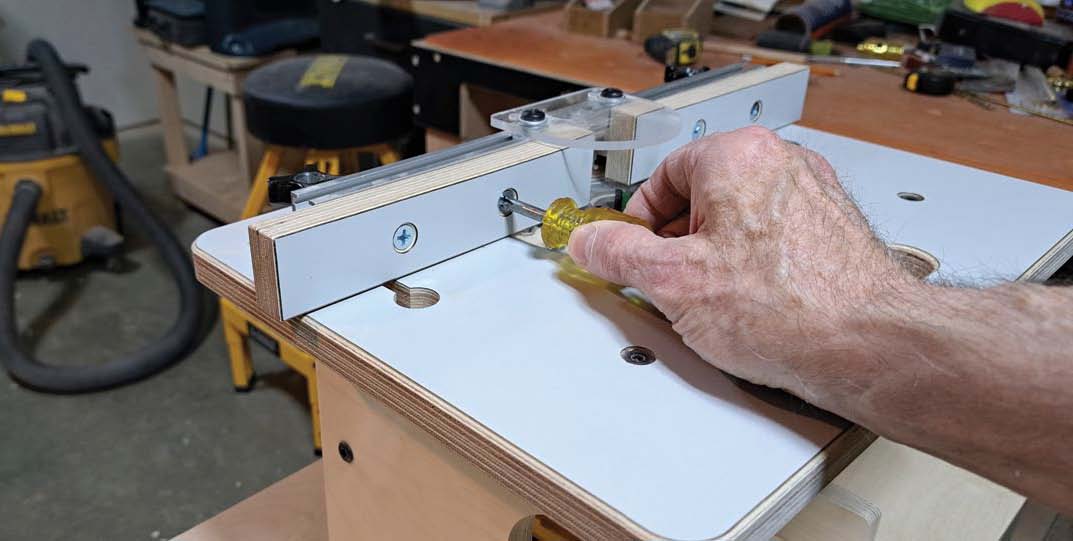
To adjust the sub-fences, you need to use a Phillips screwdriver to loosen the retaining screws. For convenience, I attached a small bracket on the side of the table to hold the screwdriver, along with the starting pin and wrench. There isn’t a mitre gauge slot on the tabletop, but you can make a fence to run along the front edge of the table — for example, when you want to mill across the ends of boards. The quickest way to change bits is to simply remove the clamps holding the table to your workbench, tilt it over and remove the router body from its housing.
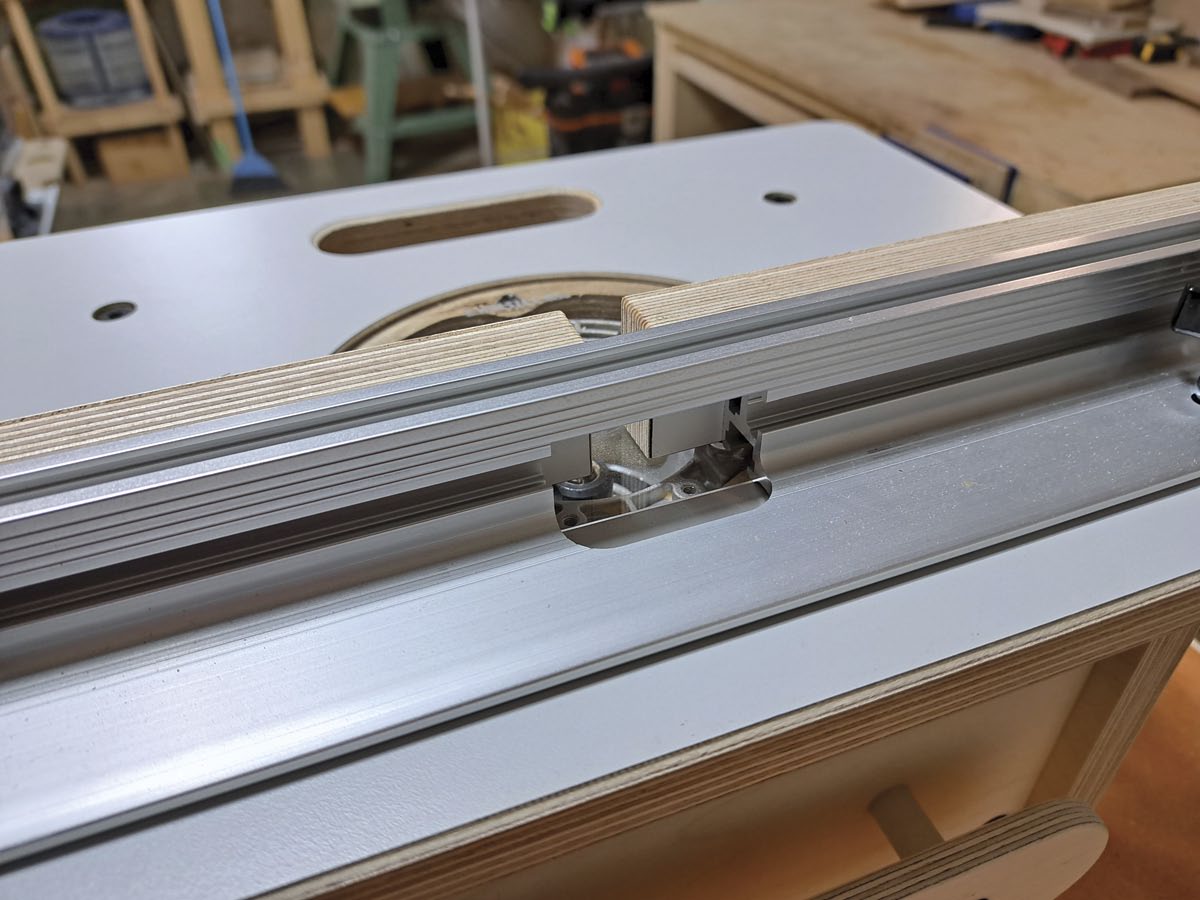
Despite its diminutive size, I find the Veritas table to be stable and the fence easy enough to adjust for making precise cuts. The top has remained perfectly flat over the past nine months of use. I use it for routing small stock and narrow rabbets and grooves, switching to a larger router table when I need to use bigger bits or work with heavy, bulky stock.
Woodpecker’s StabliMax RT Plus
Woodpeck.com $349.99 US
If the Veritas router table feels a bit small for your needs, the StabliMax might just be the upgrade you’re looking for. While it does come with a steeper price tag — about $500 CAD — it offers a compelling set of enhancements that more than justify the cost.
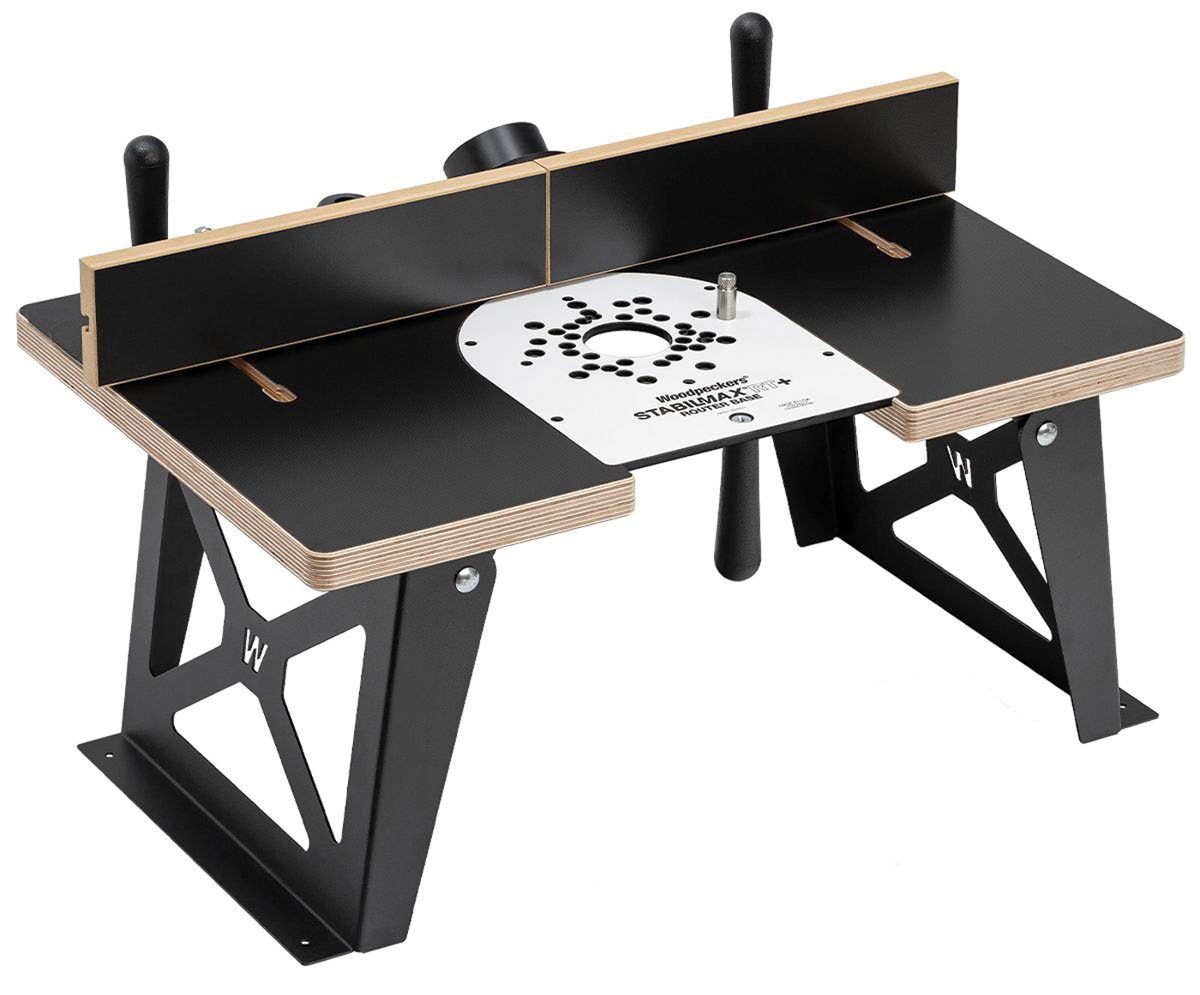
The StabliMax features a significantly larger and wider work surface, a more robust and refined fence system, a proper dust collection port and a removable mounting plate designed for effortless transitions between table-mounted and freehand routing.
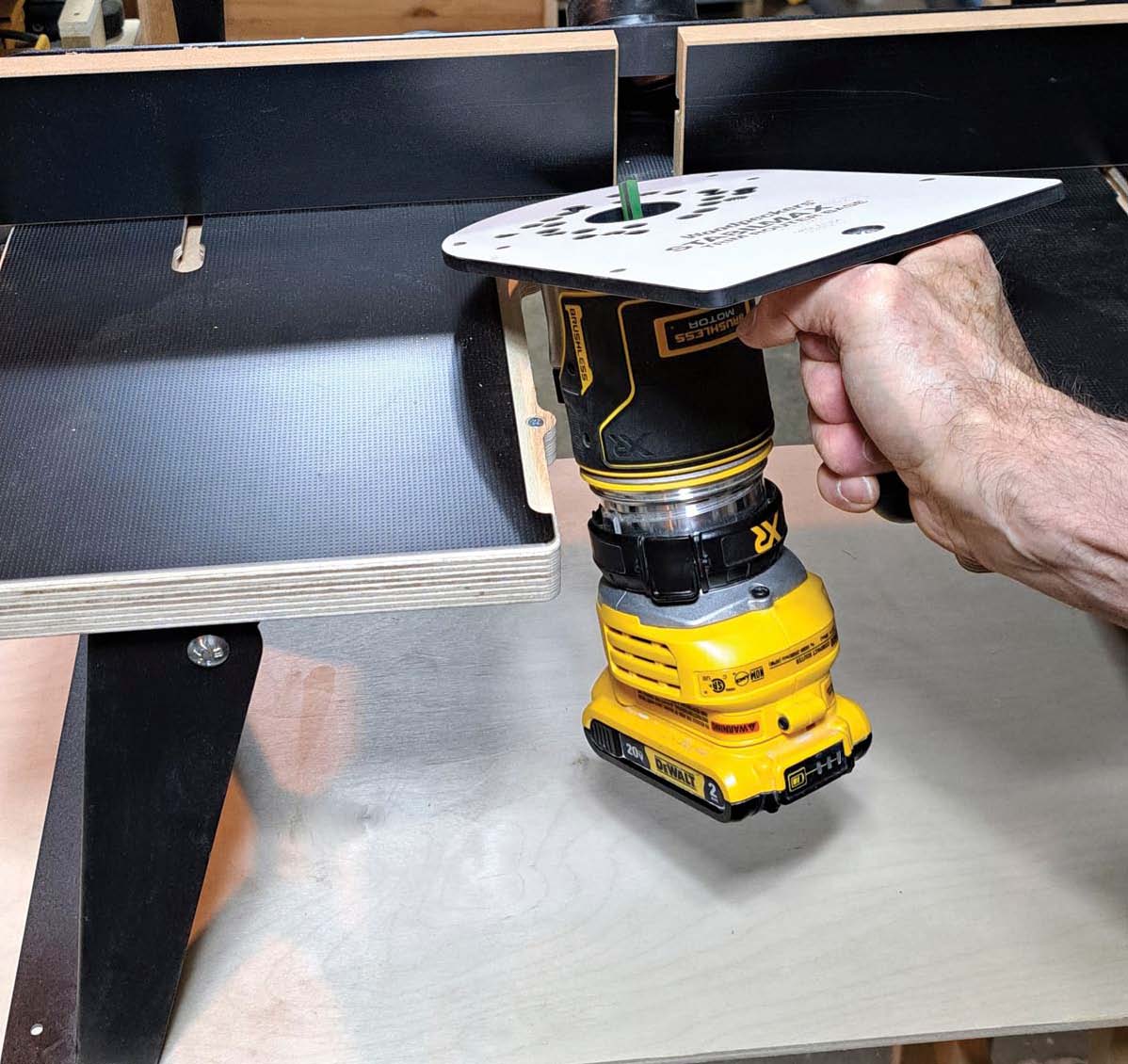
Like the Veritas, it arrives disassembled but goes together in no time — assembly is quick and straightforward. It also includes two Rack-It brackets, allowing you to conveniently wall-mount the table when not in use. What sets the StabliMax apart is its innovative snap-in mounting plate, which detaches easily for handheld routing. The plate sits flush with the tabletop and is compatible with standard 1-3/16″ template guides.
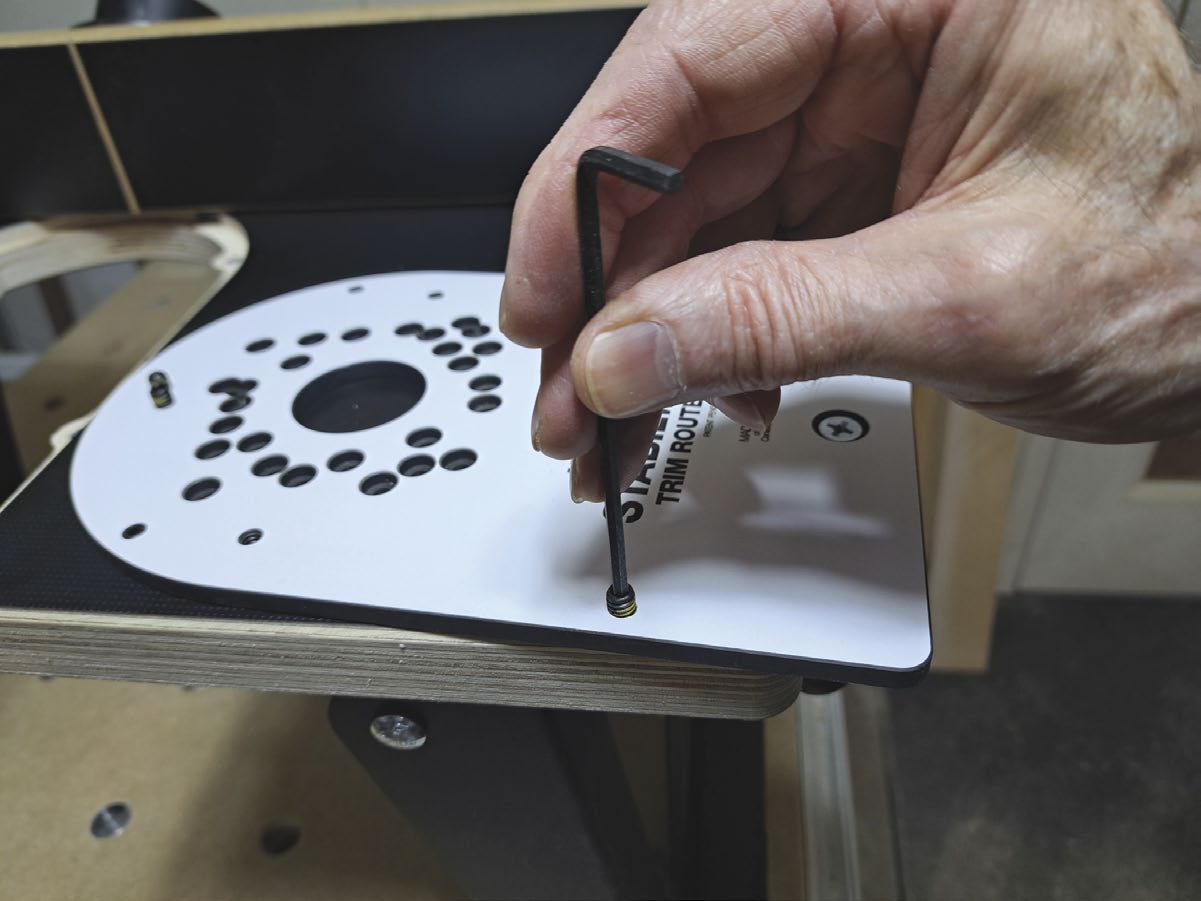
One of the biggest advantages of the StabliMax is its ability to accommodate a broader range of compact and mid-sized 2-1/2 HP routers, compared to the Veritas. This flexibility means you can use a wider variety of router bits, expanding the scope of what you can accomplish.
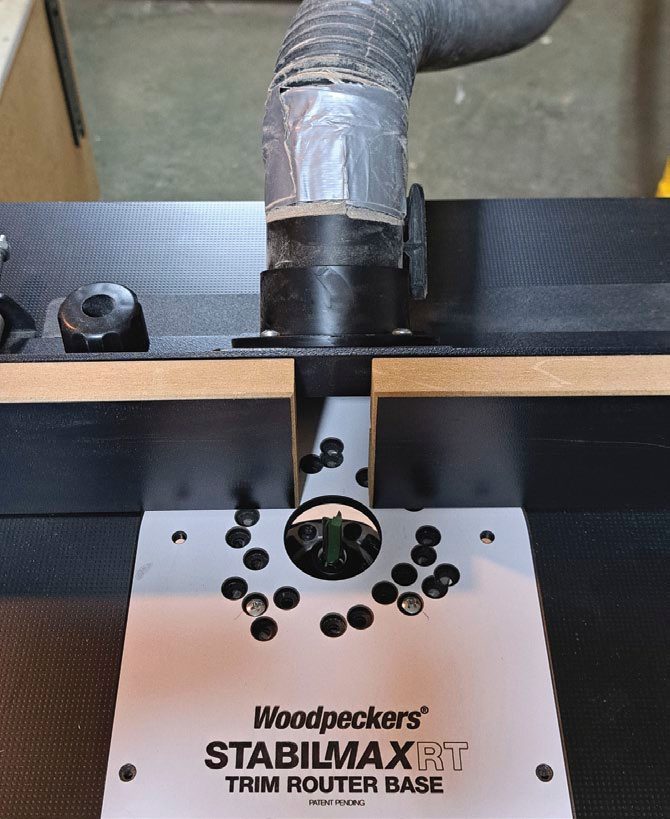
The table itself measures a generous 15-1/2″ by 24″, giving you more than twice the surface area of the Veritas. The two 3″ by 12″ fences are also double the height, offering better support for taller workpieces. Constructed from a rigid 1″ thick, laminate-coated, 17-ply Baltic birch top, the table provides excellent stability. Even though the tabletop is larger than the Veritas, you still only get 7″ of workspace in front of the bit. As well, it doesn’t include a mitre gauge slot, but the sub-fences are easily adjustable thanks to conventional knobs located at the rear of the fence frame. The fence itself includes a built-in dust port compatible with both 2-1/2″ and 2-1/4″ hoses.
One standout feature is the micro-adjustment knob on the fence, allowing for incredibly precise adjustments as fine as 1/64″ over 7/16″ of travel, with no backlash. It’s a thoughtful addition that proves especially handy for fine-tuning cuts.
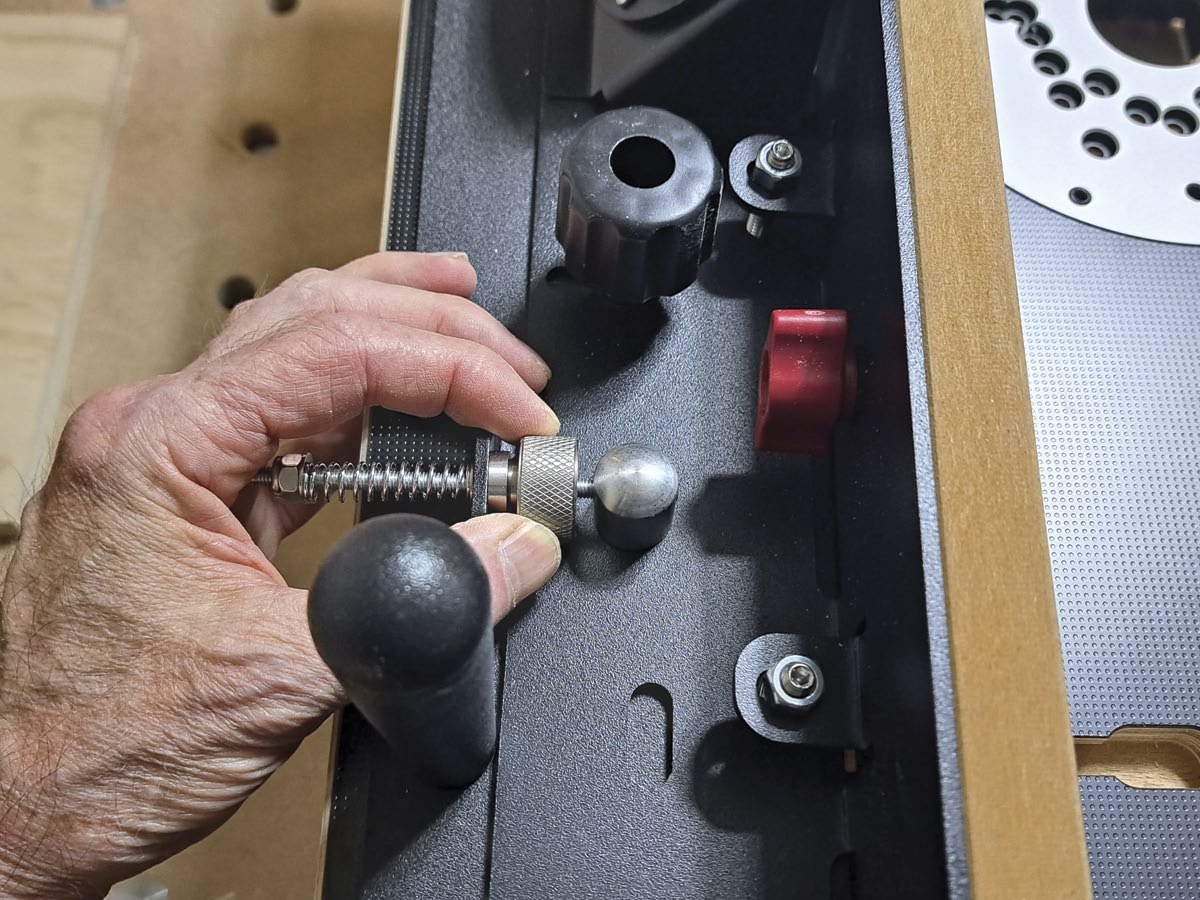
All in all, the StabliMax packs a suite of well-designed, practical features that are rarely found in other router tables, making it a high-value option. If you don’t require the expansive footprint of a full-sized stationary router table, the StabliMax offers an excellent balance of versatility, precision and compact convenience in a smaller package.
Bosch RA1181 Professional
Boschtools.com $299.00
The Bosch RA1181 has been in production for almost 15 years and it’s easy to see why. It offers nearly everything you’d want in a full-size benchtop router table.
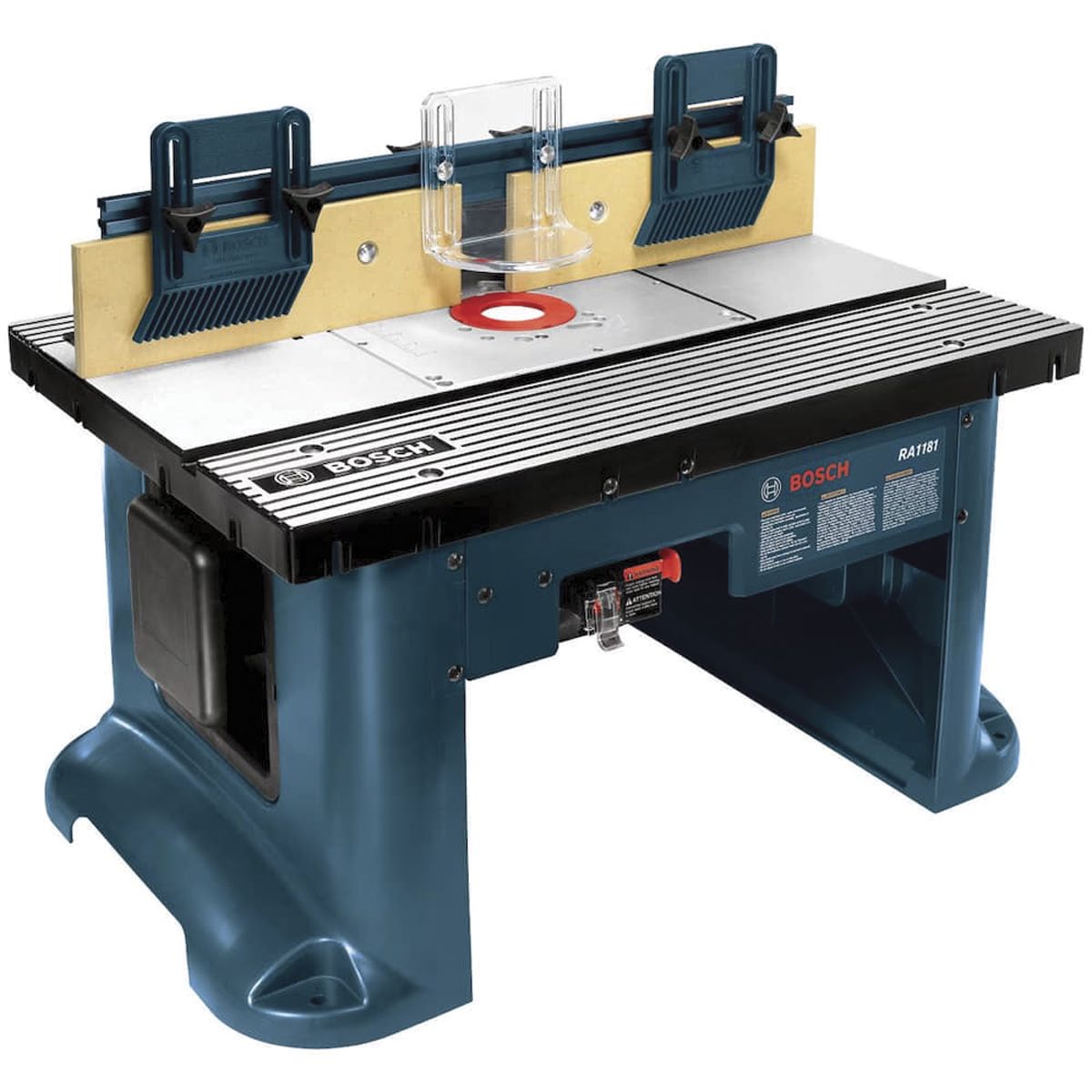
Assembly took me about an hour, including mounting the router and levelling the aluminum mounting plate. The table features an 18″ by 27″ aluminum top — slightly larger than the StabliMax — mounted on a moulded plastic base. On either side of the base there’s a cord wrap and a tool storage pocket for added convenience.
The RA1181 includes a front-mounted power switch and two integrated outlets: one for your router and one for a vacuum. It also comes with a 15-amp power cord, which should be sufficient for most standard routers.
The aluminum mounting plate is pre-drilled to fit a variety of fixed-base routers up to 2-1/4 HP. Note that it does not support compact routers. One of the most convenient features is the above-table height adjustment, which makes bit changes and depth adjustments quick and easy.
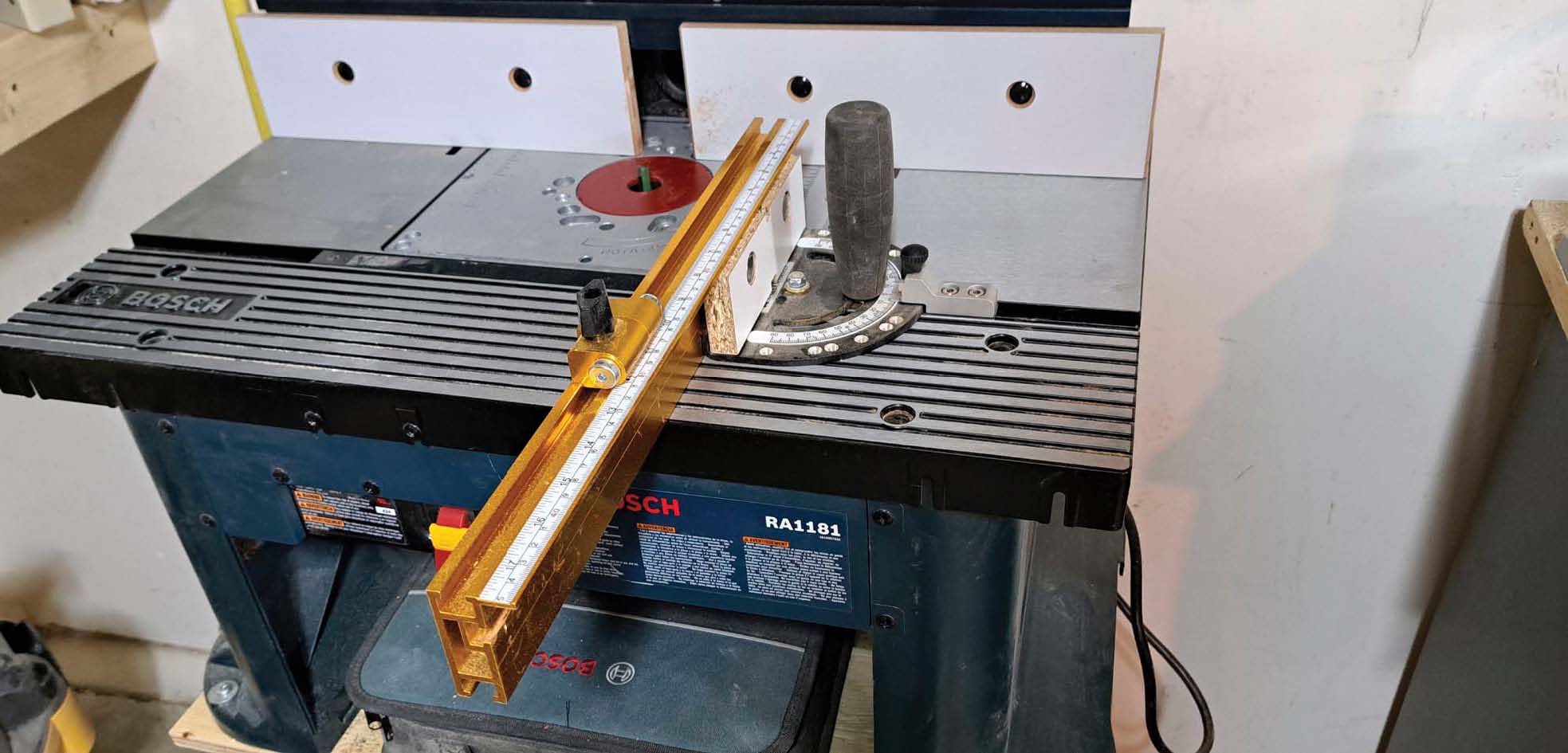
I found the top to be perfectly flat, with no noticeable deflection during use. Like laminated tops, the aluminum surface allows stock to slide smoothly. Unlike the Veritas and StabliMax, the RA1181 includes a standard mitre slot. Once clamped or bolted to a work surface, the table remains rock-steady with no discernible vibration. There’s almost 11″ of workspace in front of the bit — ample room for most routing tasks.
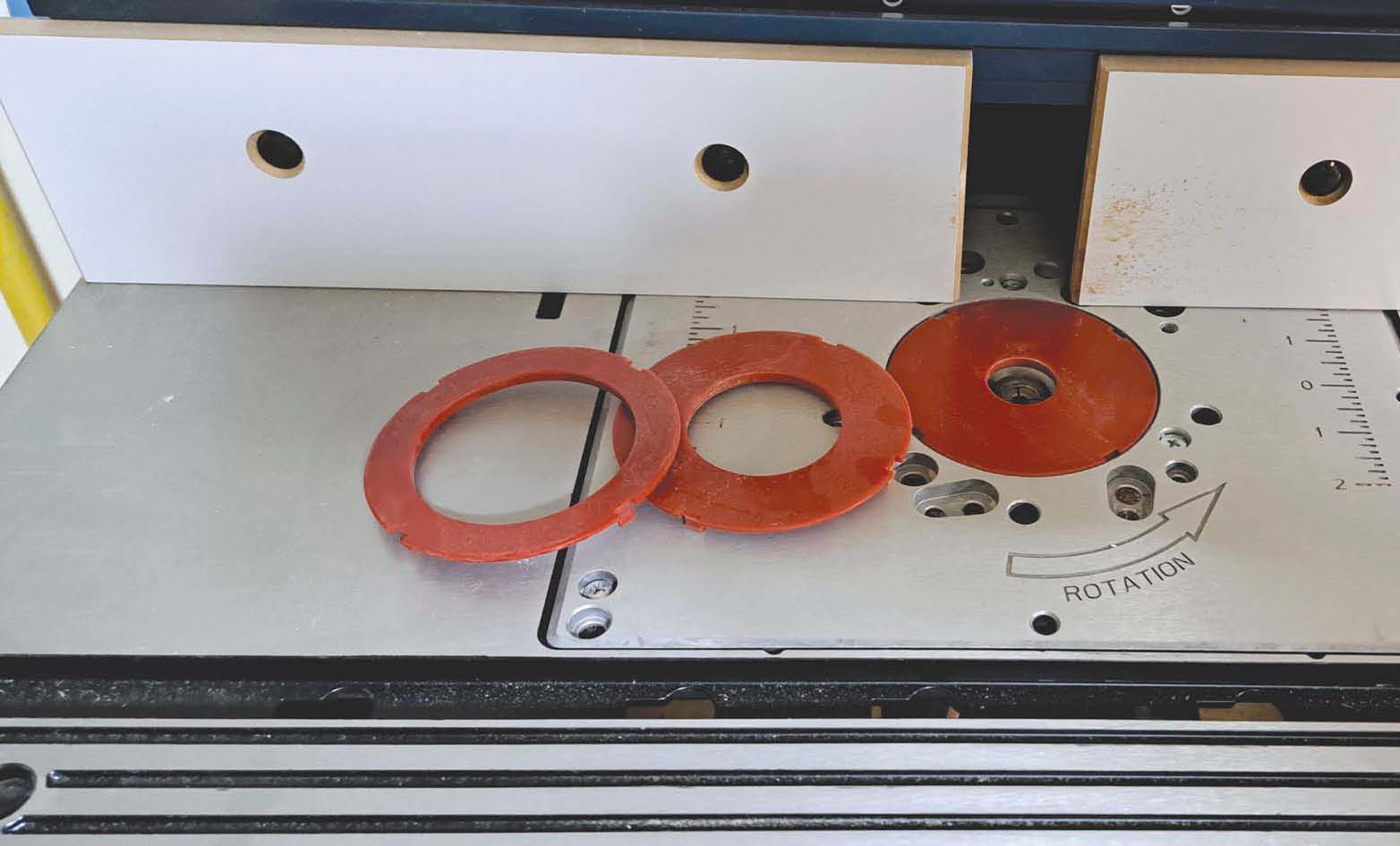
The fence system is another highlight. The 4″ high by 12-1/2″ long aluminum sub-fences with MDF faces offer excellent support, especially for taller stock. Adjustments are made via large, easy-to-use wing nuts. However, unlike the StabliMax, it lacks a micro-adjustment feature on the fence.
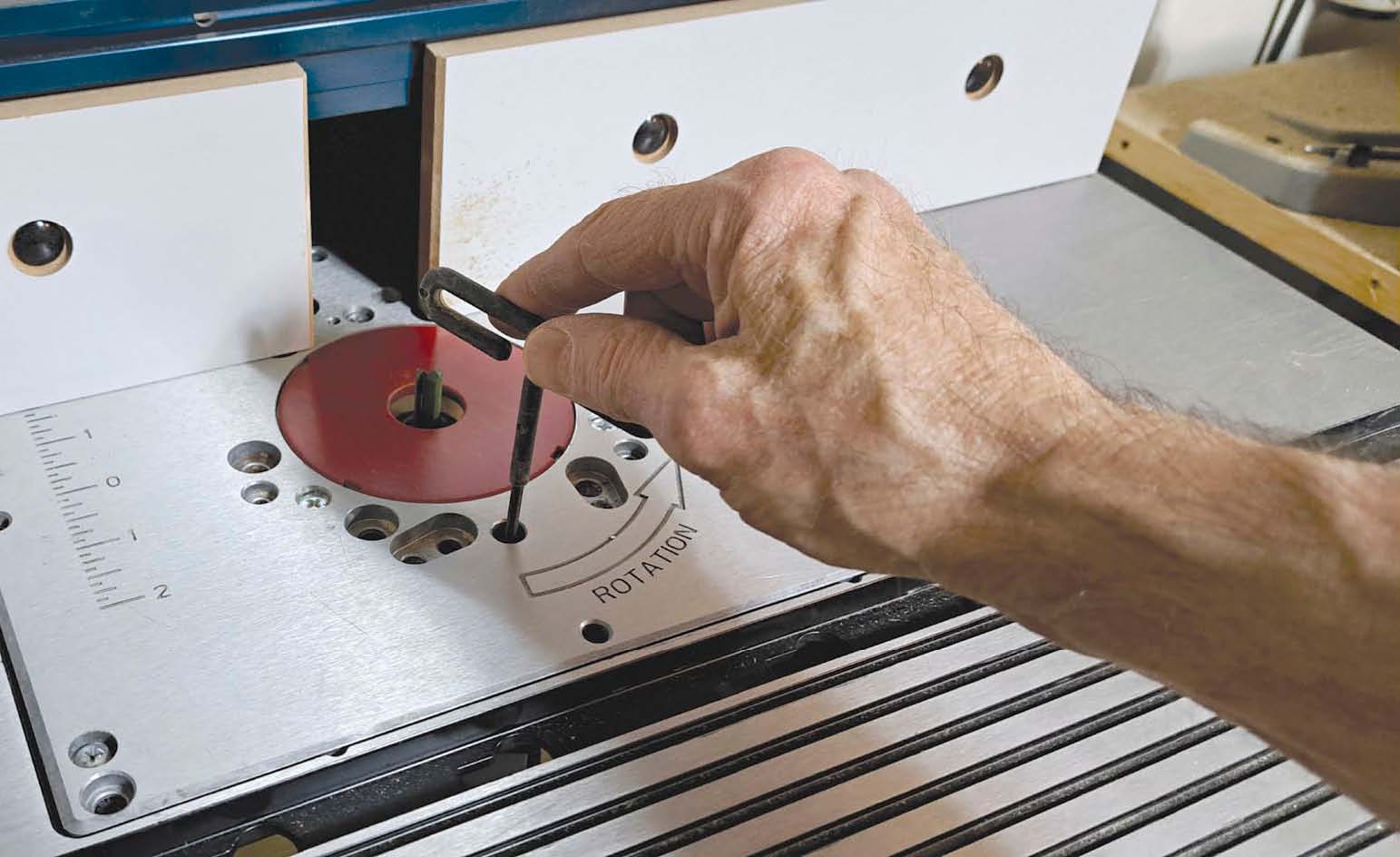
The RA1181 comes with dual featherboards to enhance safety and control. Like the StabliMax, the fence includes a dust port compatible with both 2-1/2″ and 2-1/4″ hoses. Three mounting plate insert rings are included. I did notice that the rings sit slightly below the plate surface, which can affect precision, especially on shorter stock. This isn’t a major issue for longer or wider pieces. However, none of the rings support standard 1-3/16″ template guides, which could be a drawback if you frequently do template routing.
If you can live with those limitations, the RA1181 is a solid choice. It’s well-made, stable in use and offers a high level of functionality at a reasonable price.
Other full-size benchtop router tables that are popular among woodworkers include the Kreg PRS2100, the SawStop RT-DC and the Skil RAS900.
So, which benchtop router table should you buy? The answer depends on the type of work you do, your shop setup, your specific routing needs and your budget.
Carl Duguay - carlduguay@gmail.com
Carl is a Victoria-based furniture maker and the senior editor at Canadian Woodworking & Home Improvement.
More articles in Benchtop Machinery


